Some of the rarest types of lizards in the world are purple. Living tens of feet underground or in remote areas of Madagascar, these types of lizards are highly sought after in the pet lizard trade industry.
Many lizards are purple only for a brief period of their lives or are purple as a result of chameleon-style color adaptations to their habitat.
Some types of purple lizards are exclusively raised and bred in captivity. The following spectacular species of lizards come in different purple nuances (dominant or secondary) and may be spotted in the wilderness or raised in captivity.
Table of Contents
1. Purple Anole
Purple Anoles (Anolis purpurescens) are mostly green but can show purple nuances across the head and the upper body.
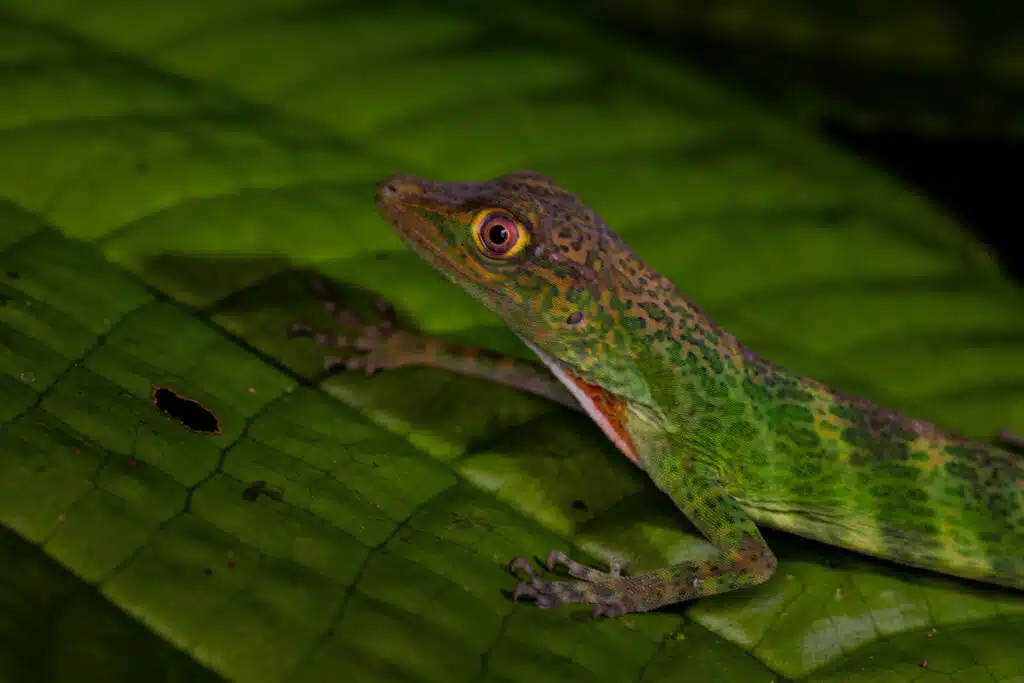
Found in the forests of Ecuador, Colombia, or Costa Rica, Purple Anoles may also show purple tails.
These can be purple while the rest of the body is green or they can seen when the species is also purple on the head.
Blue or black spots are further characteristic of the dorsum of this species.
The dewlap of these anoles is also colorful, and one of the main reasons to consider is as a pet lizard.
Orange dewlaps with a white spot at the base are seen on male Purple Anoles.
These dewlaps tend to attract the attention of other species due to having a white spot at the base.
Females show slightly different coloring with a green dewlap that also shows a white base and white stripes.
These types of anoles are diurnal and they spend their nights hiding either under leaves or up on trees.
Spotting these anoles may not be as easy in the forest as they’re mostly arboreal.
However, unlike other truly arboreal lizards, Purple Anoles mostly prefer climbing smaller trees.
2. Mwanza Flat-headed Rock Agama
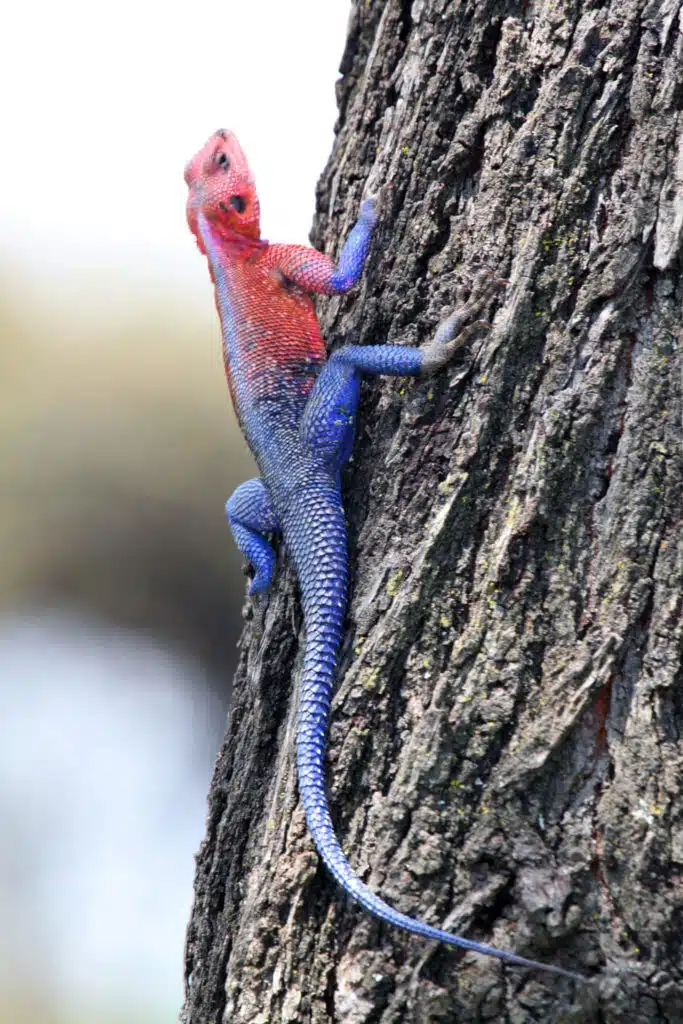
Purple and pink nuances are specific to Mwanza Flat-headed Rock Agamas (Agama mwanzae).
Dual coloring characterizes the split look of males. Pink-violet upper bodies and heads are combined with a blue-purple lower body and tail to complete the colorful appearance of males.
These colors can vary but the tail and the lower body are often purple.
Mwanza Flat-Headed Rock Agamas are among the species that show coloring differences between males and females. This is why females of the species are dark brown.
Males are more colorful as a means to attract the attention of the females.
Color alone is not the only trait males use for breeding success. They can also move their heads around females as a means of impressing the female partner.
A species named after its rocky habitat, the colorful Mwanza Flat-headed Rock Agama is native to Africa.
It can be seen in semi-desert habitats across Tanzania and Kenya.
3. Leopard Gecko – Lavender Morph
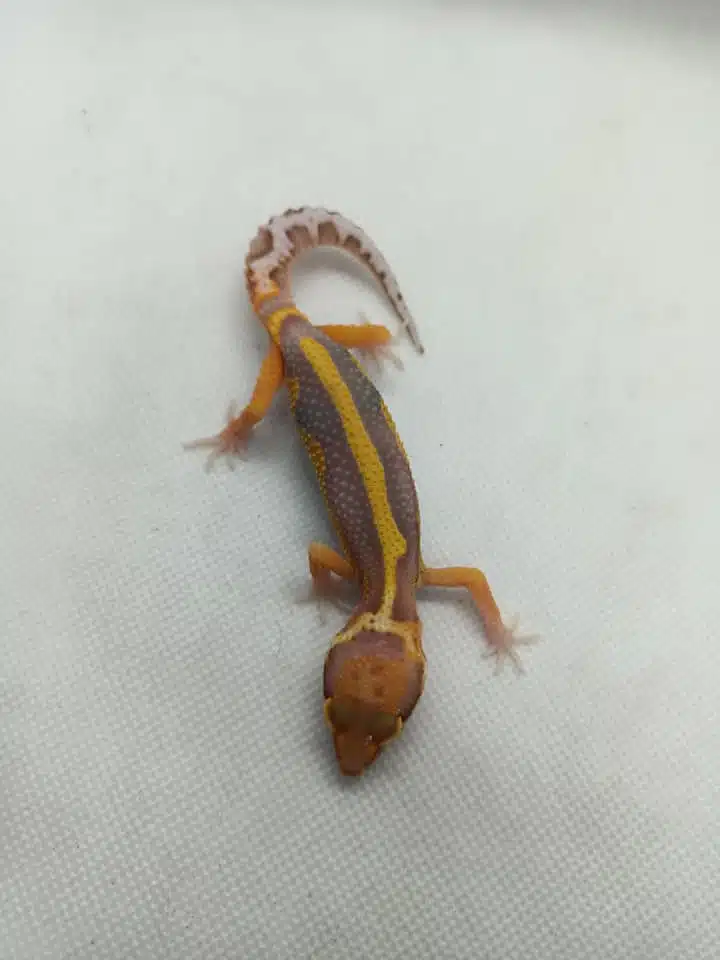
Lavender and purple nuances are a trait of Leopard Geckos in the lavender morph.
This lavender-purple appearance of the popular gecko is mostly known among lizard collectors.
A lavender type of Leopard Gecko is a rare sight as this is a color and a pattern that fades in time. The lavender nuance becomes very bright as the gecko ages.
Even the lavender morph itself has a different appearance. Lavender and yellow appearances are common.
This appearance or pattern also shows white bands around the neck.
There’s also a lavender morph with base yellow nuances only showing lavender spots.
White sections are also common on lavender morphs in the form of stripes, patterns, or spots on the tail.
These are inherited from the albino Leopard Gecko, used to create The Lavander Morph.
4. Chameleon – Purple Morph
Some of the rarest and most colorful types of chameleons are purple.
Native to Madagascar, Panther chameleon locales can differ and even change colors to some of the quirkiest color combinations.
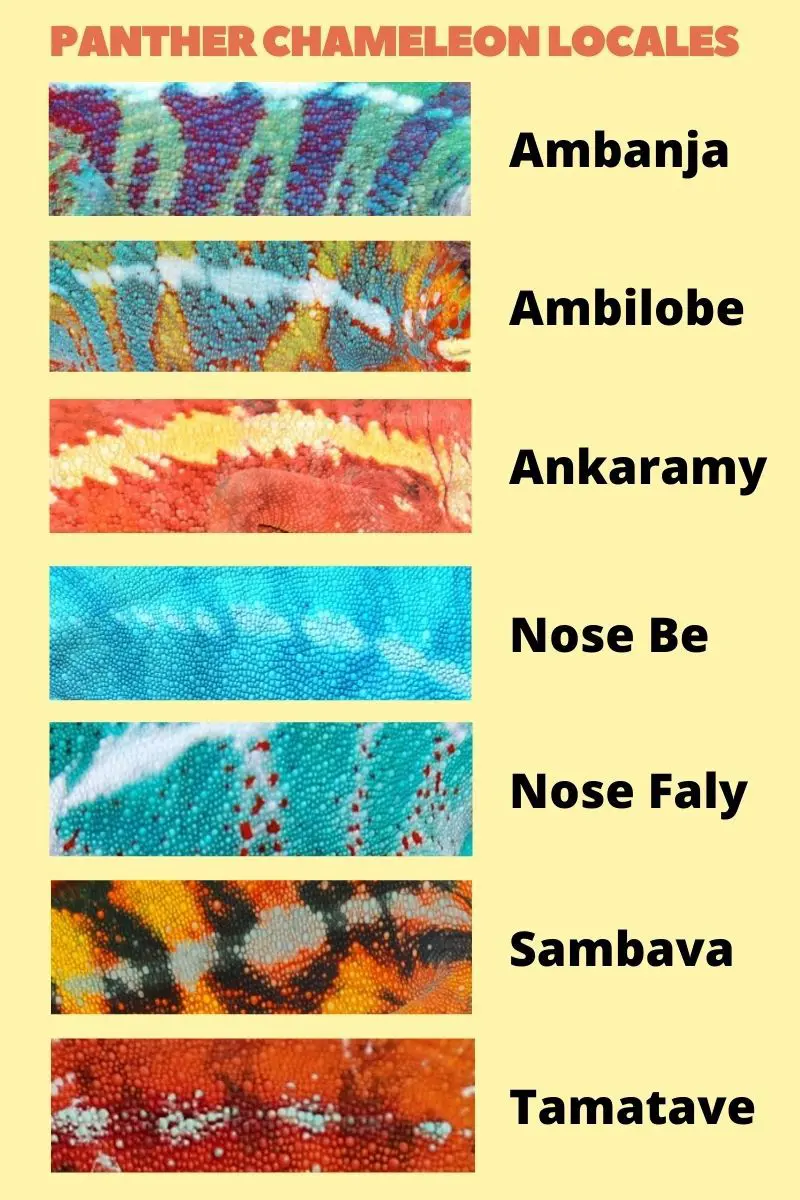
Ambilobes and Ambanjas are among the species which have blue-purple nuances.
Among these locales, Ambanjas are generally accepted as blue-purple dominant chameleons. These types of colorful chameleons have bred in captivity for decades.
They are seen as bright blue with dark blue-purple saddles. Color changes can make them mostly blue-purple with bright blue side stripes.
There are even Ambanjas that don’t have any of these colors. Furthermore, the females of the species are mostly brown, dark brown, and black.
Ambilobe locales are brighter purple. Pink-purple nuances across the body with blue-purple nuances across the head are seen in this chameleon locale.
5. Lichtenfelder’s Gecko
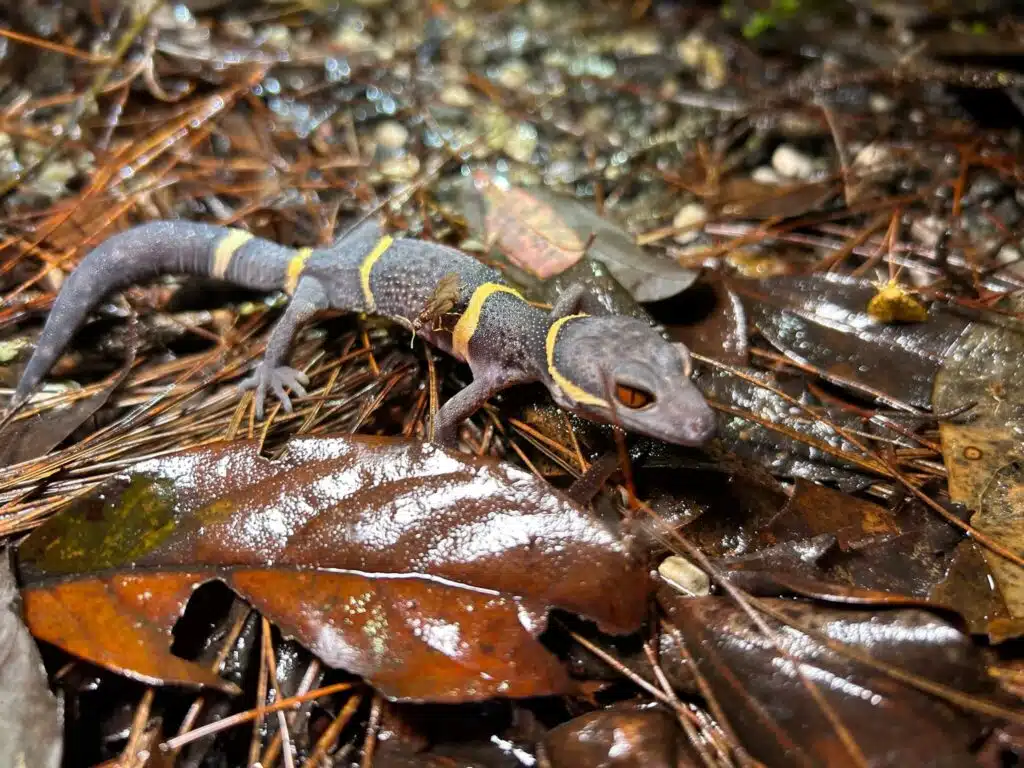
Dark purple nuances are specific to Lichtenfelder’s Geckos (Goniurosaurus lichtenfelderi).
This is a type of lizard that gets purple-brown nuances across its body as it ages, from an initial brighter purple nuance in its early days.
Bright bands across the body also contrast this lizard. These bands can have one or 2 colors.
Cream-white or white bands contrast the dark purple nuance of the species. Cream-yellow bands are seen across the body while its tail may sometimes show white bands.
These bands may or may not have black margins.
Red-brown eyes are further characteristic of these types of geckos.
At a young age, this gecko shows a combination of bright purple and dark purple nuances.
The bright purple nuance is the ground color while the dark purple nuances are dorsal patterns.
The same cream-white and white bands are seen on the gecko from a young age.
6. Iberian Worm Lizard

One of the multiple species of subterranean lizards, Iberian Worm Lizards (Blanus cinereus) are mostly dark purple.
Spotting these lizards is complicated as they live deep underground. While they may surface when it rains, these lizards of Southern Spain and Portugal are mostly secretive.
When it surfaces, it can easily be misidentified with a type of worm.
Inspecting its head is one of the ways to correctly identify this species as it has small eyes, unlike worms.
With a length of up to 5.9 inches, Iberian Worm Lizards are among the species that get darker as they age. This is why they have a pink nuance at first, turning dark pink or dark purple as they grow.